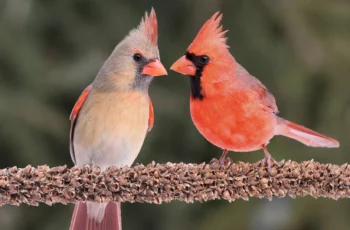Ad Blocker Detected
Our website is made possible by displaying online advertisements to our visitors. Please consider supporting us by disabling your ad blocker.
After you’ve set traps to address the mice already in your home, it’s crucial to shift your focus towards taking preventive measures to keep more mice and other rodents from gaining entry.
Step 1. Seal Your Exterior
Mice can squeeze through minuscule openings as small as a dime. Therefore, the initial and potentially most challenging step in naturally eliminating mice is locating and sealing any holes in your home’s exterior. Give special consideration to areas where utility lines (such as cable or television lines) enter your home, as well as the vents for dryers and fans. Additionally, carefully inspect gaps in your home’s siding around windows and doors. This thorough sealing effort is crucial in preventing further mouse infiltration.
Cracks And Gaps Where Mice Enter
Mice are unlikely to chew through caulk, making it an effective tool for sealing small gaps or cracks. However, for larger holes, caulk requires some support. To address this, pack steel wool, which mice can’t chew through, into these larger gaps before applying caulk. Alternatively, backer rod can also serve this purpose.
Leaving doors ajar when you’re in the garden essentially extends an invitation to mice. It’s essential to keep doors firmly shut and ensure they have a proper seal. If there are any drafts, take the necessary steps to add weatherstripping. Remember, if a draft can get in, a mouse can too.
Don’t Forget Pet Doors
Pet flaps can offer convenient access not only to your pets but also to mice. If you value their convenience, consider upgrading to an automatic pet door that operates only when activated by an electronic chip on your pet’s collar. This ensures that only your designated pets can enter, minimizing the risk of unwanted rodent visitors.
Tip for Cat Owners
Mice tend to steer clear of areas they suspect a cat might inhabit. With this in mind, think about situating your pet’s litter box near common entry points, such as the garage door or the laundry room, as mice frequently gain access through openings around the dryer vent. Additionally, you can distribute used kitty litter around the outskirts of outbuildings if you’re struggling to keep mice out of places like barns and sheds. This can serve as a natural deterrent.
Step 2. Tend Your Yard
Mice tend to seek refuge indoors during cold or wet weather. Therefore, an effective approach to keeping them out of your home is to make your yard less appealing to them as well. This involves consistent lawn care and maintenance, including the removal of storm debris and clutter that mice could utilize for shelter. Additionally, trimming shrubs around your home’s foundations is advisable.
Finally, ensure that outdoor garbage cans or recycling bins are properly sealed, as this will deter mice from viewing your property as an open buffet.
Step 3. Try Essential Oils
There are a couple of scents that mice find unpleasant. One of them is peppermint oil, which comes with the added benefit of deterring various other household pests. Consider incorporating peppermint essential oil into your homemade cleaners or diffusing it using fragrance warmers.
Another scent that repels mice is camphor, which most people find disagreeable as well. While you might not want to use it in the main living areas of your home, camphor can be an effective pest control measure in less frequented spaces like attics and sheds. A simple method is to place a handful of mothballs in an old sock and hang it near windows in those areas.
Step 4. Starve Them Out
Mice are incredibly resourceful when it comes to finding food. They can survive on as little as 3 to 4 grams of food per day, meaning what may seem like crumbs on the floor to you can be a substantial meal for them. If they can’t find loose crumbs, mice will readily chew through cardboard food boxes or other packaging to access what’s inside. While thorough cleaning won’t entirely eliminate mice, maintaining a tidy home can significantly reduce their attraction.
Here are some steps to minimize their food sources:
- Store dry goods in airtight containers (this also helps prevent pantry moths).
- Dispose of old newspapers, magazines, and other materials that mice could use for bedding.
- Avoid leaving dirty dishes in the sink.
- Wipe down counters after meals.
- Sweep your kitchen daily.
- Remove your pet’s food between feedings.
- Empty the kitchen trash each night.
Cleaning After A Mouse Infestation
Mouse droppings harbor harmful bacteria and occasionally even parasites. Moreover, their fur can be host to fleas. Therefore, whenever you come across signs that a mouse has been inside your home, it’s imperative to conduct a thorough cleaning and disinfection. Start by cleaning the area with soapy water to eliminate any dirt, and then apply a disinfectant to eradicate pathogens.
For safety, be sure to wear disposable gloves and use materials that can be discarded after use. This precaution is crucial to avoid inadvertently spreading germs throughout your home.
[mashshare]


